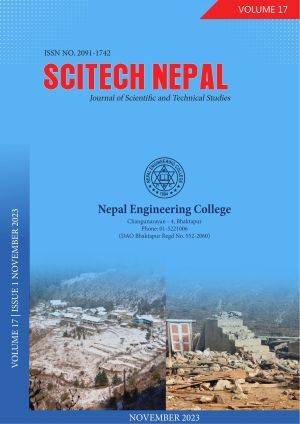Microbial Quality Assessment of Fresh Sugarcane Juice in Retail Shops Inside Kathmandu Valley
DOI:
https://doi.org/10.3126/scitech.v17i1.60495Keywords:
Foodborne diseases, fresh sugarcane juice, Kathmandu Valley, microbial quality assessment, retail shopsAbstract
This study aims to assess the microbial quality of fresh sugarcane juice sold in retail shops inside Kathmandu Valley, as there is limited information available on the safety of popular fresh juices like sugarcane juice, which can cause food-borne illnesses when improperly prepared, despite the known health benefits of consuming fresh fruits juices. Sixty fresh sugar cane juice samples were collected from selected thirteen areas inside Kathmandu Valley. Out of 60 samples, 42 samples were contaminated with bacteria. The quality of each sample was assessed by total plate count, total coliform count, yeast and mold count, and isolation of pathogenic bacteria. The isolated bacteria were identified based on biochemical characteristics. The pH of collected samples ranged from 4.33 to 6.34, acidity from 0.01% to 0.09%, and total soluble solids from 13 to 21⁰Brix. The mean bacterial count was 5.26 log10 CFU/ml, the coliform count was 4.67 log10 CFU/ml, and the yeast mold count was 4.94 log10 CFU/ml. E. coli was present in 38.1%, Citrobacter freundii in 47.6%, and Salmonella species in 14.3% of the total sample. Vibrio cholerae was not detected. Gentamicin, Ciprofloxacin, and Ofloxacin were effective, while Ampicillin was less effective. The study found that sugarcane juice samples from shops in Kathmandu Valley have high levels of contamination, including a high microbial load and slightly acidic pH with high total soluble solid values. The bacterial isolates exhibited varied degrees of antimicrobial susceptibilities and resistances, and the contamination was attributed to poor hygienic conditions during juice processing and handling, possibly due to the use of poor-quality water and a lack of training on food hygiene and safety. These findings suggest potential health hazards for consumers of fresh sugarcane juice.




